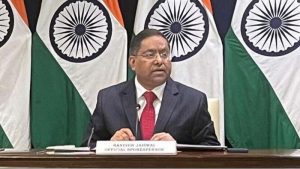Himachal May Not Achieve Renewable Energy Target
Y.S. Rana
The writer is a Hamirpur based Himachali settled in Chandigarh

The official further stated that the state plan to source at least 19% of its total electricity demand from renewable energy sources which also included three percent from solar energy. He admitted that despite bumpy progress, the state government was committed to achieve 100% village electrification by May 1, 2018.
The state has 17,882 villages and as on August, 2017 only seven villages have not been electrified. In case of household electrification, of 14.70 lakh households, 14.51 households were provided ‘switch on’ facility. Remaining 0.19 lakh households will be provided electricity by March, 2018. Himachal has the distinction of achieving 100% intensive electrification of un-electrified village and state has electrified 15,763 BPL households so far. At the current prices, average investment required is about Rs 7 crore per MW generation and therefore it requires a huge investment of about Rs 1600 crore to set up about 220 MW capacity to meet RPPO of three percent as set up by the HPERC. At present, the state is purchasing solar power from 35 MW capacity plants of NTPC and Solar Energy Corporation of India located outside Himachal Pradesh.
Benefiting 300 Villagers In Spiti
Demul village in Spiti at 14,400 feet above sea level has little access to conventional energy and remained in darkness throughout the year. The state government has installed a micro grid system to provide solar-powered home light in every household through solar powered vaccine fridge at Kaza which benefits around 300 villagers. It cost the government around Rs 11.95 lakh.
25 Plants For Govt. Buildings
The state government has sanctioned 25 Solar Photovoltaic (SPV) power plants at various government buildings. The state government is providing subsidy up to 90% for SPV plants being installed in government buildings and up to 70% in residential and social sector. According to HIMURJA official the government also offering incentives such as generation-based incentives, capital and interest subsidies, viability gap funding, concessional finance and fiscal incentives to promote renewable energy.
250 Plants For Households
Around 250 SPV power plant of one KW capacity each have been sanctioned for individual household. Of these, 152 SPV plants have been installed and remaining would be installed soon. To popularize the use of renewable energy, the government is also providing funds under the SC Component Plan for installation of SPV Street Lighting Systems in SC villages with a population of 40% or more. Besides, over 8000 SPV lights have been installed under this programme and apart from this 55,230 SPV CFL Type lantern; 22,586 SPV Home Lights and 674 SPV LED home lights have been installed in the state.
Ray Of Light For Villages
The union government started Remote Village Electrification programme with an objective of providing financial support for electrification of those villages and hamlets where electrification through grid extension was neither feasible nor cost- effective. During the 11th Five Year Plan, MNRE set a target for electrification of 7,000 villages and electrified 5,229 villages. Progressively from 2007-08, the coverage under the Remote Village Electrification programme declined over the years. No targets were fixed by MNRE for the years 2012-13 and 2013-14. It was also observed that the release of Central Financial Assistance
decreased from Rs. 132.81 crore in 2007-08 to Rs. 17.92 crore in 2013-14 and this was not commensurate with the targets. Audit observed that in some states there were mismatches between the list of remote villages verified by Rural Electrification Corporation Limited, those sanctioned by the MNRE and the villages actually reported as covered by the States. Physical verification of sampled systems by Audit revealed that 20% of the Remote Village Electrification systems were not working and six percent of the systems were found missing, indicating poor maintenance and monitoring. Micro grid is becoming a new ray of light for remote villages of hilly state.
Himachal-o-Meter
The state’s ups and downs this week
Himachal Reduces VAT On Petrol, Diesel
Shimla: The high petrol and diesel prices had become the biggest issue right now all across the country. The issue became more prominent as price of crude oil in international market is at much relatively lower side as compared to UPA tenure. Much hue and cry by the public and opposition saw union government reducing excise duty by two rupees on petrol and diesel. And now Himachal government has extended relief to Himachalies. The state government has reduced value added tax (VAT) on petrol and diesel by one percent providing much needed relief to the commuters. This move by the state government has translated into reduction in petrol and diesel prices by about 50 paise and 47 paise respectively.
10 Drug Industries Fail To Meet Quality Standards
BBN: Medicines manufactures at 10 drug industries established in Himachal have failed to meet quality standards of the Central Drugs Standard Control Authority (CDSCO). These drugs were manufactured at drug industries located in Baddi, Barotiwala, Paonta Sahib and Sansarpur Terrace. Besides this, drugs manufactured in 11 other drugs manufacturing industries of the country were found to be below required standards. These includes medicines of diabetes, gastric, pain killer, fever and antibiotics. The state drugs control authority after CDSCO alert has directed the related pharma companies to withdraw the entire batch of medicines failing to meet quality standards. Besides this, drugs inspectors have been directed to submit the report after proper inspection of the concerned drugs industries. According to information 22 type of medicines manufactured in different states failed to meet CDSCO quality standards.
Keep watching our YouTube Channel ‘Divya Himachal TV’. Also, Download our Android App













